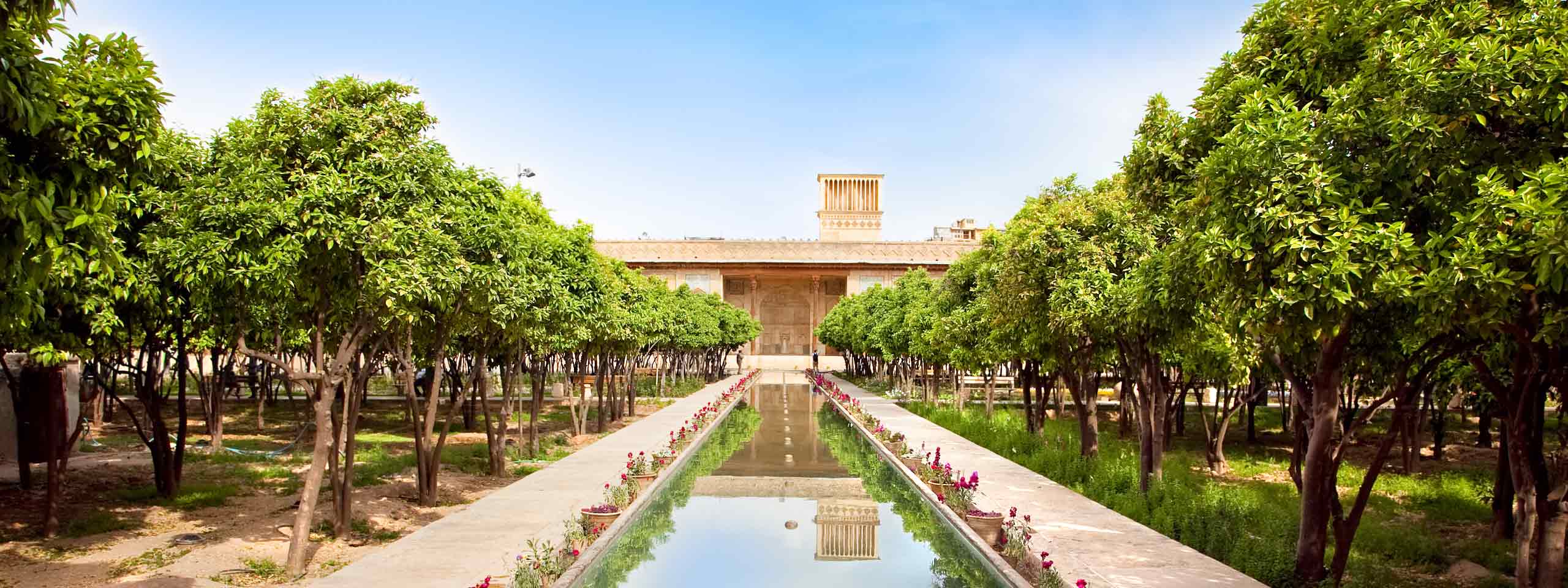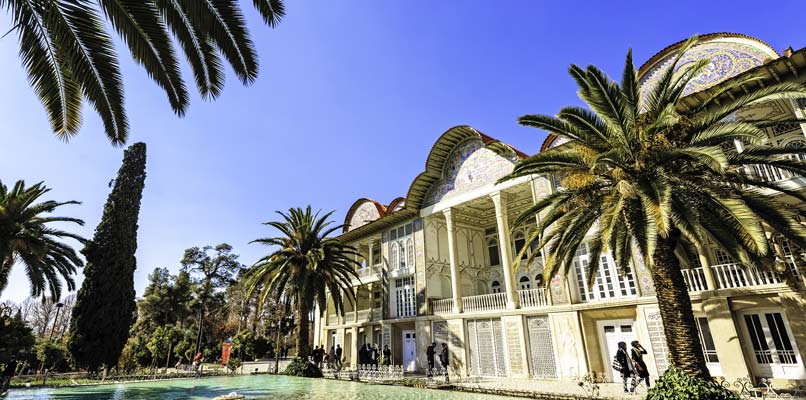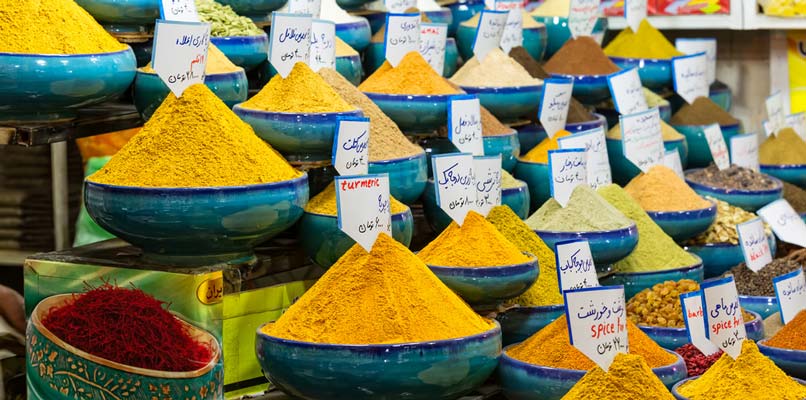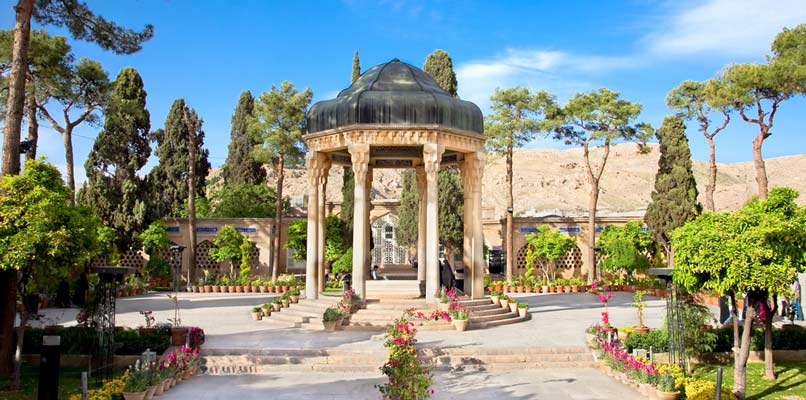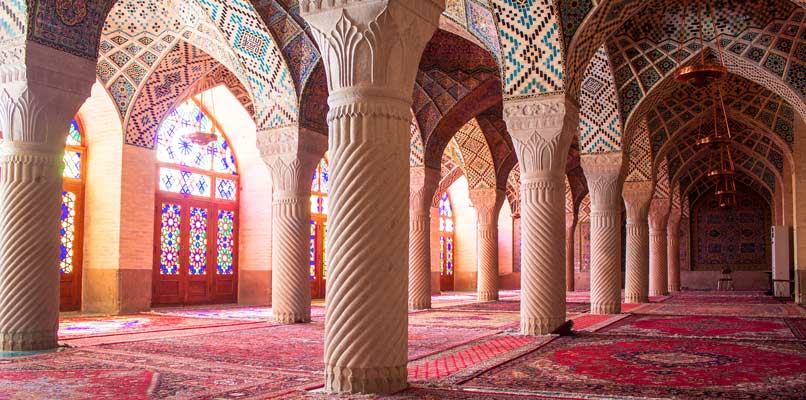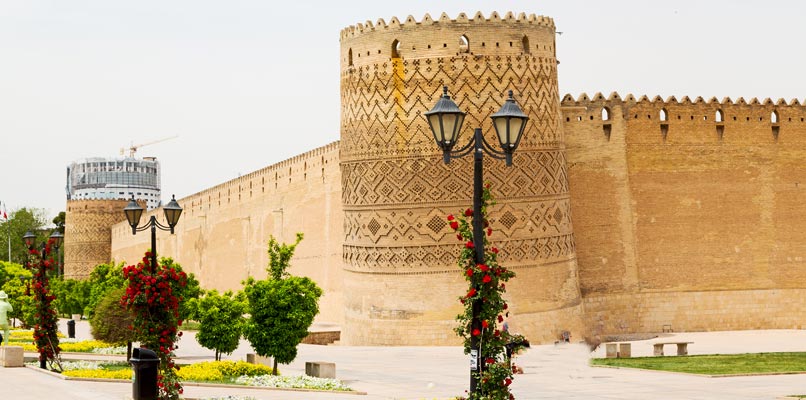A city where art, history, nature and music comes together, Shiraz is the cultural hub of Iran. Visit the many monuments and religious sites peppered across the city to unearth the rich heritage of the region.
Discover poetry
Shiraz has been producing influential creatives for decades and you can visit shrines across the city that celebrate the most beloved.
Set in a beautiful floral garden, the Tomb of Hafez pays respect to the life and work of the great Iranian 14th-century poet. Find peace in the memorial gardens, read some of Hafez’s poems in the small library and sit in a shaded spot by the domed mausoleum.
The next stop on your cultural pilgrimage should be the Tomb of Saadi. Represented on the 100,000 Iranian rial note, the famous travelling poet has a shrine dedicated to him set in lush gardens. Make your way inside the grand building and you’ll find his work showcased throughout the main hall.
Be in awe of the elegant religious monuments
Shiraz is brimming with historical and religious significance, which can be best explored through its many stunning monuments. One of the most unique is the Vakil Mosque. Intricate stone carvings cover the ceiling, while dramatic green and blue tiles distinguish the main passageway. Visit to witness the 48 ornate columns decorating the prayer hall.
Shimmering with light, the colourful Nasir ol-Molk Mosque is another elegant masterpiece. Nicknamed the Pink Mosque, its colourful floral-patterned tiles and stained-glass windows have a breath-taking effect. Walk along the Persian carpets through each room to discover the wall carvings and mosaic archways. What’s most spectacular about this mosque is its transformation as the sun rises and sets each day. Beaming through the glass of the windows, sunrays tessellate each room, creating a kaleidoscope of colour.
Learn about the history of the city
In northern Shiraz, the historical Qur’an Gate can be discovered. It was restored during the Zand dynasty when a room was added to house a sacred hand-written Quran, which is now safely stored in the Pars Museum. This historical gate is said to bless travellers who pass underneath with a safe journey.
Finish your trip with a visit to Arg-e Karim Khan, a fortress named after the founder of the Zand Dynasty. The 18th-century citadel once served as a prison, but is now open to the public. Marvel at the patterned tile work and take shade in the rows of trees. A long reflection pool stretches across the courtyard with seating and flowers framing the water. Inside the fortress, there’s a small museum that showcases local culture.



